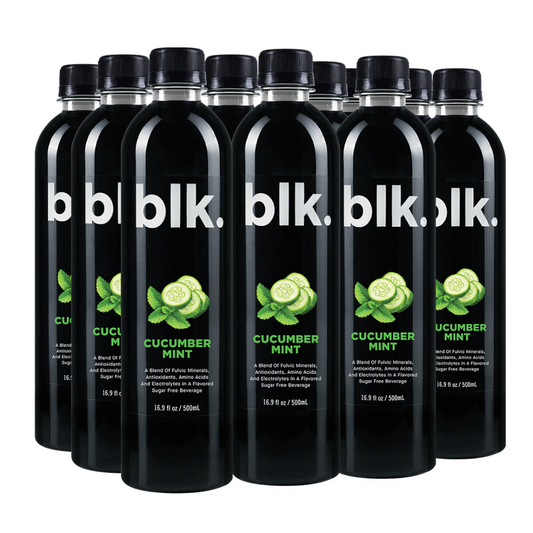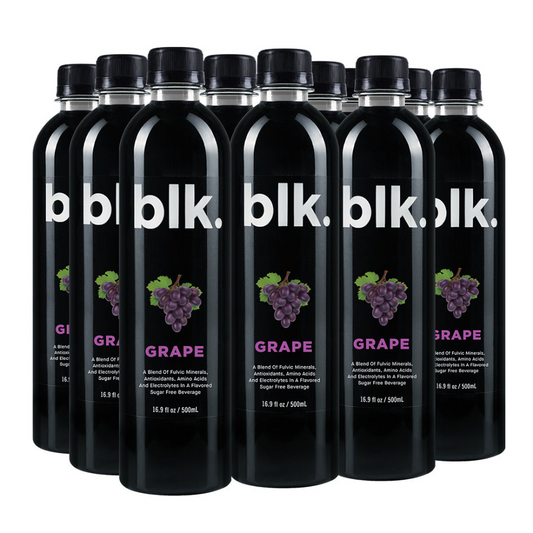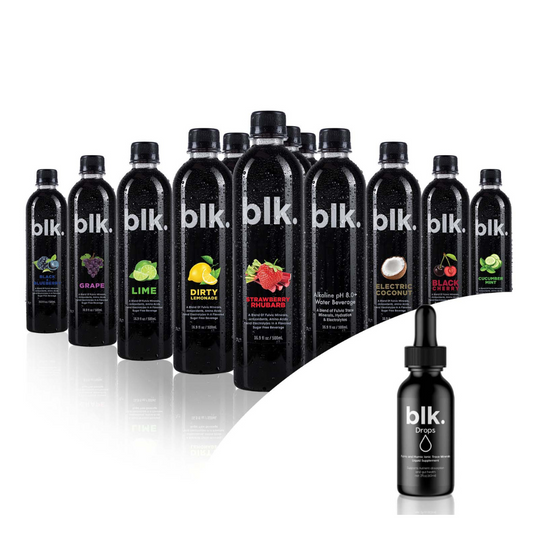
Whey Protein Hydrolysate: The Superior Choice
This article seeks to guide you in the following:
- What whey protein hydrolysate is
- Its benefits
- How to take whey protein hydrolysate
- The best whey protein hydrolysates
Are you an athlete or fitness buff looking to supplement your daily protein intake? Whey protein powder is the ideal choice for you. Whey protein is an extract from milk. Whey, the watery part of milk, is high in protein and an ideal protein source. Whey’s popularity is due to its high protein content and pocket-friendly characteristics. Whey can come in three primary forms: concentrate, isolate, and hydrolysate. Whey concentrate contains about 70 - 80% protein. Whey isolate contains 90% protein but lacks lactose, fat, and other beneficial nutrients available in whey concentrate. This article will focus on the third type of whey protein: whey hydrolysate.
Whey hydrolysate is made through the hydrolysis of whey protein. This is done by introducing enzymes into the protein to catalyze the digestive process. Once the whey is hydrolyzed, it is pressed and dried to form a whey hydrolysate powder. This unique characteristic of being pre-digested makes whey hydrolysate very effective. It causes a 40 percent increase in insulin levels as it can be absorbed into the bloodstream faster than other forms of whey protein.
Why Is Whey Protein Hydrolysate The Best Choice?
There are many advantages to taking whey protein hydrolysate. This part of the article will discuss the various benefits of taking whey protein hydrolysate.
Easy On Your Stomach
Common side effects associated with the consumption of whey protein include stomach distress, bloating, gas, diarrhea, and other digestive issues. The leading cause of these side effects is the presence of lactose in whey protein. As stated earlier, whey protein is extracted from milk and might contain lactose.
Whey protein hydrolysate contains minute amounts of lactose and is easier on your stomach. You will not have to deal with stomachaches every time you take the supplement. People with adverse food sensitivities, such as allergies to dairy, should avoid using whey hydrolysate.
The hydrolysis process usually results in minuscule traces of lactose, but the resultant product still contains milk proteins. It is advisable to avoid whey if you have bad dairy allergies. Compared to other whey products, whey protein hydrolysate contains low lactose concentrations and will not cause stomach problems.
Easily Digestible
Whey protein hydrolysate is a fast protein. It is easily digestible compared to other protein sources, like casein. The hydrolysis process kick-starts protein digestion, making it easier for enzymes in the gut to break it down and absorb it into the bloodstream.
In a study done to compare whey and casein, it was determined that there is a sharp increase in plasma amino acid concentrations after 60 minutes of whey protein ingestion. It is recommended that you take your protein before working out so that it can offer you a boost of energy during training. This can be observed in an insulin spike after ingesting whey protein hydrolysate.
An increase in plasma amino acid concentrations during your training will ensure that the amino acids are directed to the most active part of your body, the muscles. Muscle growth occurs due to the availability of protein to be synthesized into muscle tissue through the fusion of muscle fibers.
Increased Bioavailability
Bioavailability is the number of nutrients digested, absorbed, and utilized through normal bodily functions. Whey protein hydrolysate increases the bioavailability of protein due to its digestibility and amino acid profile. Since it is pre-digested, the gut has an easier time breaking it down further, effectively absorbing it into the bloodstream.
Being a fast protein, whey is quickly and effectively absorbed, providing your muscle tissue with the required nutrients to develop. Where there is an excess of protein in the bloodstream, the amino acids are synthesized and stored in tissue for later use.
Faster Muscle Recovery
Muscle development occurs during the recovery phase of your workout. Taking whey protein hydrolysate before your workout will ensure the best recovery of your muscle tissue. During weight lifting or resistance training, weights stress muscle fibers, making them tear. To function optimally, these muscle fibers need to be repaired.
Whey protein hydrolysate is a complete protein containing the 9 essential amino acids required during protein synthesis. The amino acids are pumped to the muscle tissue during workouts, stimulating satellite cells to repair torn muscle fibers. The satellite cells fuse the muscle fibers using the abundant amino acids supplied by why protein hydrolysate. This process is accelerated when there is high-protein content that can be supplied by whey. Rest days are essential since this is the only time muscle fibers are effectively healed without muscle stress.
High Protein Content
Whey protein contains slightly less protein than whey concentrate. This is due to the action of enzymes on the protein, making some amino acids unavailable in the end product. It is estimated that whey protein hydrolysate contains about 70 percent protein compared to the 75 percent contained in whey protein concentrate. Whey protein hydrolysate contains 20 grams of protein per 32 grams serving.
It also provides you with 131 calories and 4 grams of fat. This high protein content is helpful in muscle development through its synthesis into muscle tissue. When taken before working out, the fat and carbs available in the serving are broken down to release energy vital to power through your workout regimen.
Whey protein hydrolysate contains high lysine concentrations, which is crucial in protein synthesis.
Rich In Branched-Chain Amino Acids
Whey protein hydrolysate is a rich source of BCAAs, essential in improving inflammation and vascular health. BCAAs such as arginine, leucine, valine, and isoleucine are essential BCAAs vital in muscle development. Arginine has been determined to improve blood flow into muscle tissue, while leucine and isoleucine are essential to the fusion of muscle fibers.
Increased consumption of whey protein has been shown to improve vascular health due to increased blood flow into muscle tissue.
Rich Source of Immunoglobulins
Several studies suggest that whey is a rich source of immunoglobulins. Immunoglobins are blood group proteins that are essential in the immune system. The highest concentration of immunoglobins is found in breast milk to protect infants against diseases.
Since whey is a milk derivative, it contains high immunoglobulins essential to the immune system. This is especially true from milk extracted immediately after a calf’s birth. This milk is called colostrum and contains very high blood group protein concentrations.
Immunoglobulins can be found in the form of antibodies such as IgA, IgM, and IgG. Secretory IgA is crucial in treating certain bacterial infections making whey protein important as an immune booster. Some studies suggest that whey production from unimmunized cows gives whey protein antibodies against salmonella enteridis, salmonella typhimurium, and E.coli. Whey protein can be used as an immune booster due to its high concentration of immunoglobulins.
How To Use Whey Protein Hydrolysate
Your intake of whey protein hydrolysate is based on your needs. If you seek to gain mass, the recommended daily protein intake is between 0.8 - 1.2 grams per pound of body weight. This is to ensure that muscle tissue receives the excess amount of dietary protein that is present in the bloodstream.
Whey protein hydrolysate is rich in leucine, which is essential in muscle development. High concentrations of leucine have the effect of needing less protein to build muscle. Ideally, a 200-pound athlete would need 45 grams of protein to build mass, but with a high concentration of leucine, they only need 25 - 35 grams per day.
This is beneficial since they can consume more protein daily geared towards muscle development, helping them reach their fitness goals.
How, then, should you take whey protein hydrolysate? Whey protein hydrolysate can be taken at any time of the day. However, taking it as a pre-and post-workout will guarantee you the best results. It will boost energy during your workout by stimulating the breakdown of fat to produce energy. When taken after your workout, it is helpful in the recovery phase as it will be utilized to fuse torn muscle fibers making your muscles grow stronger and more prominent.
What Are The Best Whey Protein Hydrolysates?
Blackstone Labs: 3 - Whey Three Protein Source Blend Vanilla 27 servings. This whey protein powder is made from a blend of whey isolate, hydrolysate, and concentrate. This ensures that you get the best out of the supplement. Whey isolate and concentrate have a higher protein content than hydrolysate and provide high-quality protein for you to bulk up. The hydrolysate is vital in its BCAA concentration to increase blood flow into the muscle tissue and synthesize protein into muscle tissue.
RuleOne: R1 Whey Blend Cafe Mocha 28 servings. This blend of whey protein powder is perfect for your body-building needs. It offers a delicious mix of high-quality ingredients that give you an added energy boost to power through your workout. Its 24 grams of protein per scoop is essential in weight training as it is easily synthesized into the muscle tissue. It is also rich in BCAAs and immunoglobulins to help in muscle development and boost your body’s immunity.
Musclepharm: Combat Protein Powder Chocolate Peanut Butter 26 servings offers 25 grams of protein per serving. Its blend of whey protein concentrate, hydrolysate, and isolate provides high-quality protein vital in your body-building journey. It is a delicious blend of ingredients engineered to ensure you train longer, harder, and more intensely to ensure muscle growth. It also contains enough protein to improve your recovery period.
Conclusion
Whey protein hydrolysate has many benefits. It is easily digested due to hydrolysis, which kick-starts the digestive process. Its high protein content is rich in branched-chain amino acids crucial in muscle development. It contains high concentrations of leucine, which is vital in the muscle-building process.
Whey protein hydrolysate contains low amounts of lactose and does not cause side effects such as bloating and diarrhea. The process of hydrolysis removes most of the lactose present in the powder, making it ideal for use by people with mild lactose sensitivity.
Another benefit of a whey protein hydrolysate is the high concentration of immunoglobulins. Antibodies such as IgA and IgG are essential to fight against bacterial infections. Whey protein hydrolysate should be taken depending on one’s needs. If you are just seeking to supplement your protein intake, you can take the supplement at any time.
However, if you are a fitness buff, it is recommended that you take the powder both before and after your workout. This ensures your muscles get enough protein to repair after an intense workout.
Frequently Asked Questions
-
How is whey protein hydrolysate different from other forms of whey protein?
-
Can lactose-intolerant individuals use whey protein hydrolysate?
-
What are the benefits of whey protein hydrolysate?
-
How does whey protein hydrolysate promote immunity?
-
Can vegetarians consume whey protein hydrolysate?




